I have always been proud of Singapore Zoo; aside from being one of the top ten zoos in the world, its proximity to where I used to stay has also resulted in a lot of nice, childhood memories which I would reminisce from time to time.
And I sure hope it would be as memorable for the kids when they grow up. Special thanks to my dad, who decided to sponsor our visit with his S$100 SingapoRediscovers voucher!
Jovyn taking a photograph for her grandpa while we waited for bus number 138 at a bus stop next to the picturesque upper seletar reservoir.
Driving past the iconic sign at the T-junction, signaling the entry road leading to the attractions managed by Wildlife Reserves Singapore. In the future, this area would also include the bird park, in addition to the existing River Safari and Night Safari.
Bus stop was just a two minutes' walk and we had arrived at the entrance of Singapore Zoo! Be prepared for more than a hundred photographs in this post as I didn't want to create sub-postings, given my current backlog!
Entering the Singapore Zoo after showing our e-tickets to the friendly staff member at the gantry! The store on the left is a gift store; in the past, this was the only place with air-conditioning and kids like us love to loiter inside right before we exited the zoo.
Ongoing improvement works; a good time to do them given that the borders are still closed and we are still unable to get tourists in.
Treetops Trail - the zone nearest to the entrance, this trail replicates a rainforest habitat for which visitors can observe from an elevated angle. There's supposed to be a pair of Siamangs but they were well hidden. There was only one time I heard their calls, in a visit a few years ago, and boy were they loud!
False Gharials - found in "freshwater rivers and swamps of Thailand, Malaysia and Indonesia", they can grow up to 5 meters long! They sure looked huge despite being a few meters beneath us.
Great White Pelicans - most of them were on the artificial islands but occasionally, they would rest on the banks and could be awfully close to you!
Sometimes, we would need a keen eye to spot the animals.
It was hard to spot the gibbon but I noticed the movement. The camera didn't quite capture the gibbon into the treehouse and I needed to up the brightness bar on Photoshop to show you what's in the box.
More of the gibbons.
Photo moment time! I still can get them to pose at this age; give and take another five more years and I guess they would be less willing. Anyway, there's no blue whale and white walrus in the Singapore Zoo; appreciate the information though.
Penguins enclosure! Compared to the Penguin Coast at Jurong Bird Park, this was a little bit tiny and from the look of it, there's only one penguin species.
Another photo moment!
I had said this before but I am going to say it again; the signage, with little animal images of the enclosures directed to, added an element of uniqueness to an otherwise pretty boring guidepost.
Enclosure for the largest tree dwelling mammals; the orang utan!
Want to get closer to the orang utan? Do drop by the above hut which appeared to be built in the Indonesian architectural style and featured a large glass panel for visitors to observe the orangutans at nearer distance.
We were fortunate to have one youngling so near us!
Do you know that there are two types of orangutans? One is Sumatran whereas the other one is Bornean. While both didn't have much difference, the Sumatran orangutan is critically endangered with just about 7,500 in the wild.
World's smallest bear; the Malayan sun bear! A few years ago, there was a video circulating online, of this weird animal that was later found to be a hairless sun bear!
One thing about visiting the Singapore Zoo in the earlier morning; you might chance upon the feeding time when it's easier to spot the animals.
Here's the sun bear! A long time ago, they were in an outdoor enclosure and back then, it's common for visitors to throw things like fruits and you could see the bears literally 'begging" you for the food on your hands. Those were the times.
Komodo dragons - one of Indonesia's national treasures and found only in the Indonesian islands of Komodo, Rinca, Flores and Padar, they were known for their size (up to 3 meters) and their venomous bite.
Nothing leh....
Finally caught one; in the past, I used to think Komodo dragons existed in Singapore but turned out the one I saw was the much smaller Malayan water monitor lizard.
Aldabra giant tortoises - it was said that they make the strangest barking sound when they mate! I was more curious about Aldabra and it turned out to the world's second largest coral atoll, belonging to Seychelles.
Not sure what tortoise species these were.
RepTopia - a somewhat new zone with over "60 species of reptiles and amphibians"! This is the successor of the old snake kingdom which used to be a no-go zone for ophidiophobics like me.
I can stand the lizards like the ornate spiny tailed and the scorpions but from young, snakes had a strange effect on me. I can't stand seeing them, even on books and one most terrible nightmare was one snakes crawling all over my room while I scrambled to get out!
Things have changed though; I always believe in fighting my fear and even contemplated keeping a snake (illegally). Nowadays, I am still scared like most people but not to the extend of fearing them.
Chameleon was so adorable but I understand from a friend who kept reptiles that they are timid by nature and have the tendency to die of shock!
Spotted this charming little fellow in an enclosed aviary within RepTopia. Hailed from South America, this is the channel-billed toucan. Looked like it's quite used to humans.
Yangtze alligator; I recalled seeing the same species at River Safari and commended on its cuteness! Despite its apparent diminutive size, it can grow to a maximum of 2.2 meters n length!
Well, I would likely freeze if such a large snake appeared in front of me. You can just imagine how frightened I was when I watched movies like Anaconda, Snakes on the Plane etc.
Interactive panel showing the smuggling of animals and the above photo showed how the x-ray machine was able to spot the animals being smuggled into the country.
The Tortoise Shellter - with seven rock-walled enclosures, this would likely delight the tortoise lovers. True lovers, however, would check out the The Live Turtle and Tortoise Museum which has now relocated to ORTO in Yishun!
Memorial statue of Ah Meng; the mascot of Singapore Zoo.
New attraction for you to spend more money on your kids even though there's no relevance to the zoo. Jovyn was interested but to be honest, I would prefer the natural setting at Forest Adventure in Bedok Reservoir.
Sungei Buaya - translated to Crocodile River. In Singapore, crocodiles can be found at Sungei Buloh Nature Reserve although there would be an element of danger since they are not caged up.
Proceeding to the kid's favourite destination in the zoo.
Kidzworld; a wonderland for kids, even when I was a young adult! The Kidzworld nowadays was a lot more with an animal carousel, the animal friends show and a wet play area.
Due to the ongoing pandemic, the wet play area and the playground were closed, to the disappointment of the kids as they had purposely brought along their swimming costumes to have a blast!
There were still much to be seen though; the world's smallest breed of horses, the falabellas! This would be the kind of horses that once kids see, they would love to have one as a pet! It's pity that in land-scarce Singapore, it's almost impossible unless your family is filthy rich.
Gottigen mini pigs - when I used to keep pets, one animal I would love to keep is a mini pig as they were known to be intelligent and, contrary to popular beliefs, super clean! I do feel bad though as I totally enjoy pork!
Deer with goats!
Other animals include chickens and guinea pigs; all small animals. In the past, there was also a replica of a kampong house which reminded me so much of the village near the zoo where I spent the earlier part of my childhood.
Axolotl - an intriguing amphibian known as the walking fish! It did seem like a bigger version of a tadpole though. Native to Mexico, an interesting fact about axolotl is its "ability to regenerate limbs"!
Fragile Forest - a "20,000 cubic metre biodome that mimics a tropical rainforest habitat" and my favourite zone in the Singapore Zoo.
First section would be the flutters of butterfly surrounding you! They would be so near you; you can literally see the movement of their proboscis as they feed on the fruits placed at prominent locations along the track.
Second section would be an eye opener and I would encourage everyone to slow down their pace, be quiet and observe the surroundings in this aviary.
Spotted the lesser indo-malayan mousedeer which is "one of the world's smallest hoofed animal". Known to be timid, please don't scare them!
Eclectus parrots - I initially thought they were lories and similar to those housed in lory loft at Jurong Bird Park. Guess I need more education; maybe I should make a trip to Jurong Bird Park before it moves over to Mandari.
This bird befuddled me as it reminded me of a peacock but I knew for sure it's not. Answer: it's a malay-peacock pheasant and just like a peacock, only the males exhibit the distinctive crest on their heads and "green eye-spots on their feather".
Freshwater ray in a pond but the poor thing kept getting pecked on by the mandarin duck! It's quite amusing to see although the ray must have been stressed out from the relentless bullying.
Sitting like a king on a feeding tray.
A key highlight of the Fragile Forest would be the elevated platform where you can see closeups of Malayan flying fox bats hanging upside down on tree branches!
Said to be "of the world's largest bat species", it is native to Singapore but rarely sighted. I know bats are actually quite common in Yishun but they tend to be active at night when visibility is low, and I think it's a different species as they were not that big.
An iguana blocked our descent and to be honest, I was wondering if it's real since it was motionless. Turned out to be a living creature as it had moved to another location when we dropped by a few hours later!
White-faced sakis - a misnomer as the white face is only applied to the male sakis. The pair looked so adorable as it seemed like the male saki was being nagged by the female.
As it was about time for us to catch the "Splash Safari" show, we didn't have the luxury to stay further and check out the other animals within the fragile forest. Hence, a few other photos for your viewing pleasure.
Golden lion tamarind - they were kept separately though. When I was younger, I would think keeping such unique pets would be fun but now that I am older, I believe they would thrive better (as in happier) in the nature. Anthropomorphism in play here.
Discovery outpost - glass cages housing various small insects.
Like the green bottle blue tarantula with webs spun all over the enclosure. While the venom could cause irritation, this specific species of tarantula is not known to be poisonous for humans.
Waiting for the show to start at the Shaw Foundation Amphitheatre! Given the safe management restrictions, the open air theatre is unable to hold as many persons as it used to; hence, you would have to register beforehand, via a QR code near the theatre.
I have always enjoyed the Splash Safari show as the star of the show, the sealion, was just too cute! There's another show held in the amphitheater called the "rainforest fights back". There were more animal stars but the first time I watched it, which was a while back, it was dead boring! Sure hope they have improved now.
Video for fun!
It was only about 11.00 am yet I can sense the tiredness and restlessness of the kids. Nowadays, the children are very accustomed to air-conditioned premises and handphones; hence, they are less keen when it comes to outdoor activities.
Dad wasn't too happy as the prices of the snacks were much higher than those sold in the supermarkets. Guess I should prepare myself in the future, as my elder sister would, by buying beforehand.
A happier Jovyn with a baby elephant statue. We were now in the zone where you can get close to the world's largest land mammal; the Elephants of Asia zone.
Five females formed the herd in this zone and with the multiple pavilions in this zone that overlooked the main activity area, this would be the perfect place to rest for a while.
Photos of dad with the elephants!
Why did the elephants keep sticking their trunks into the 'rocks'? Turned out there were like food inside! Good opportunity to explain to the kids how the elephants make use of their long nose.
Footprint of a human versus that of an elephant. One unusual information: you can determine the height of the elephant by measuring the circumference of their feet.
Could you spot the tower right across the reservoir?
It's the iconic rocket tower!
Original elephant herd back in 1992. I did notice that three of the five females are in the photo; Komali, Jati and Gambir. There's actually a male elephant, Chawang, but it's currently housed at Night Safari.
Up the wooden hut!
Nothing inside except for the opportunity to be weird looking elephants with a hole in the middle where you can put your head through. 😄
Great Rift Valley of Ethiopia - mentioned Ethiopia and many would draw references to its famine in the 1980s, where 1.2 million people died. But the country has since recovered and people are looking beyond that unfortunate disaster.
Aside from displaying animals from the region, this zone also replicated huts from villages of the Konso and Amhara of Ethiopia's highlands.
Rock hyrax might look like rodents but they are not; in fact, they are more related to elephants and manatees! For more facts, refer to the "10 Fun Facts About the Rock Hyrax" here.
Impressive rocky terrains for the troops of hamadryas baboon and nubian ibex!
Glass panels for closer interaction with the primates and without doubt, the red butts will catch your attention. The males were about twice the size of the females and looked so differently, they were initially thought to be of a different species.
Compared to the usual orange-colored tiger, the white tigers were unique for their interesting fur coat and blue eyes. Some of us would remember this terrifying incident back in 2008, where a worker was killed by the white tigers. You may read here for more information.
While we were marveling at the white tigers, our little gal was watching youtube. Her attention span for the zoo had now reduced dramatically and it didn't help that it was getting a bit warm.
Babirusa!
Jerald decided to leave after lunch as he had some plans. At teenage age, I think it was a bit hard to ask him to continue with our excursion. Picture taken of him at the lost and found counter as he lost his wallet; thankfully, someone found it and returned to lost and found.
This time, it's Jovyn as we can see she was totally bored. Luckily, her parents were nearby and I left her at the drop off point for them to pick her up! A waste of admission fees, if you ask me, but no point holding them back when they are uninterested.
Oh, forgot to mention one thing; the long tailed macaques that were common in the nature reserves of Singapore, had 'invaded' the Singapore Zoo. As a note of caution, don't feed them and don't get too close to them.
Since we are on monkeys, let's check out the primate kingdom zone!
By itself, the number of primates residing in this kingdom doesn't include chimpanzees, orangutans etc, which I found strange. Whatever the case, the above were the colobus monkeys and the ring-tailed lemurs.
Celebes crested macaque - the species gained popularity due to a selfie that resulted in an interesting copyright dispute; if an animal picked up your camera and shot a picture of itself, who owns the copyright? Read more here.
Don't you just love the orangutans?! They looked so bored; I would gladly volunteer to bring them around the zoo, if that's possible. I trust the zookeepers in Singapore Zoo would try their best to engage the animals so that they don't suffer much psychological distress.
Enclosure closed for upgrading.
Proboscis monkeys! I actually had the fortune to see them in the wild once when I visited Kota Kinabal and signed up for a river cruise. Want to see more photographs of them in the wild? Click here.
Wild Africa Zone - want to guess which animals?
The armored white rhinoceros! Though they can only live up to 20 years in the wild, better care under human captivity can push their lifespan to 50 years! Furthermore, right in Singapore Zoo, 24 rhinos had been borne here!
One of the animals associated with Africa would be the zebras! Many people wouldn't know there are three species of zebras and the ones at the Singapore Zoo are known as Grevy's zebras and they are the largest out of the three species.
Red River Hog - pretty pigs!
Another animal associated with Africa; the towering giraffes! See if you can spot Jubilee, a juvenile giraffe that was born in the zoo in 2015.
Maybe due to the weather, some of the animals could be in hiding as the enclosures appeared to be empty. Sometimes, it really depends on luck. For some animals, you need a bigger space for them and with all the vegetation, it takes really sharp eyesight for you to spot them.
Did you manage to find the lioness?
Lucky shot of the leopard when it just opened its mouth! Wait, is that a cheetah or a leopard? From the flow of the photographs, this should be the leopard enclosure, but I remember the cheetah has solid oval / round spots.
Fossa - I didn't know of its existence until I watched Madagascar, the animation film. It's actually a legendary animal in the country with many myths portraying its danger.
Australasia - why not Australia? Because some of the animals can also be found in Asia, like the tree kangaroos from Papua New Guinea!
Cassowary - its presence is one of intimidation. Do you know that it has deadly toenails and one blow of it blow, it can kill a man!?
Kangaroos - once thought to be docile, they can be very dangerous since an adult kangaroo can grow up to 3-meters in height and their kicks can be fatal. Dissimilar to most mammals, kangaroos grow throughout their life even though their live span is only about 10 years in the wild.
Pygmy Hippopotamus! Looking like pigs in water, they were just too lovable and I would love to keep them as pets! Only problem; they wagged their tails vigorously when shitting, in order to scatter their dung. That would be visually unimaginable, not to mention downright disgusting!
Whatever the case, a short video of the pygmy hippopotamus.
Last animal before we stepped out of the zoo; the Asian small-clawed otters! There have been calls to make the otters the national animal of Singapore as they were found to thriving in waterways like Bishan, Marina Bay etc.
The ones found outside the zoo fall under a different species; the smooth coated otters which seemed a lot larger than the Asian small-clawed.
A few more photographs of dad before we end the post! p.s. all photographs were taken using my iPhone Pro Max as I am just lazy to lug along my heavy DSLR on a hot day.
=====
Location
Website
As tourists couldn't come into Singapore given the travel restrictions, popular attractions like Singapore Zoo were not as crowded. It's a good chance for Singaporeans to visit; not only would we support the attractions that are suffering from the lack of overseas visitors, we could also make use of the SingapoRediscovers vouchers!

































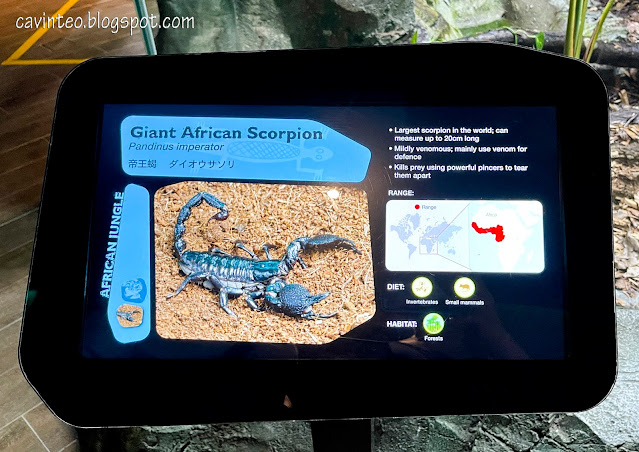












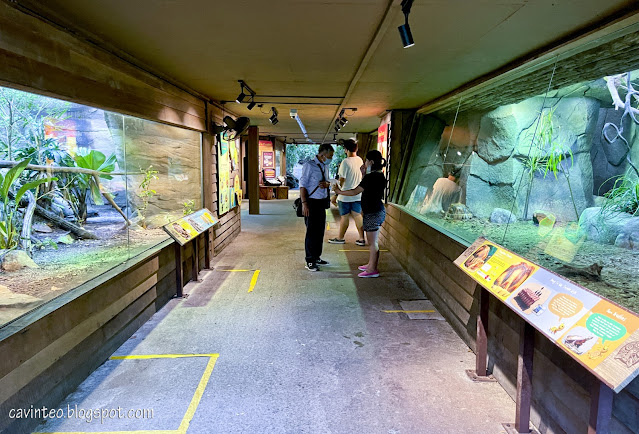



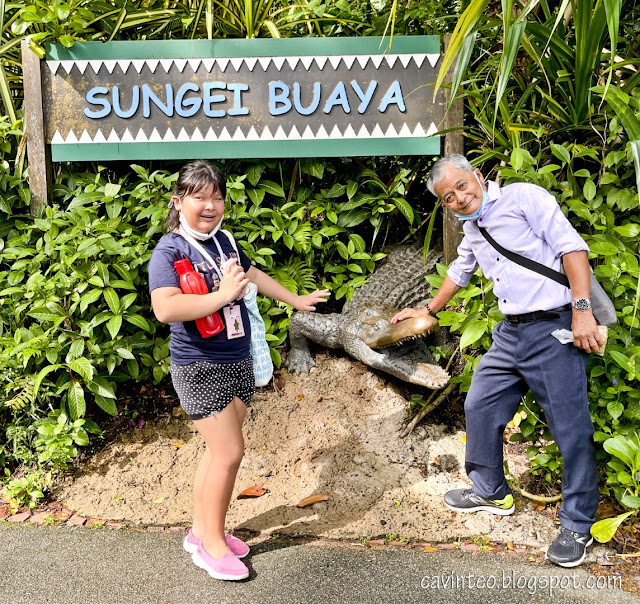
















































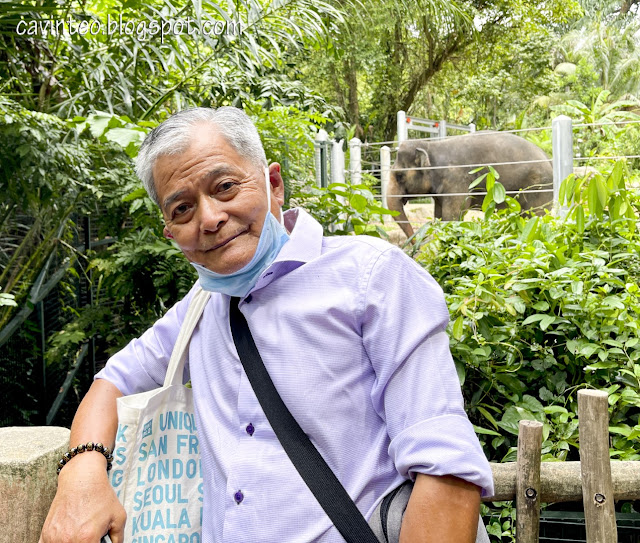






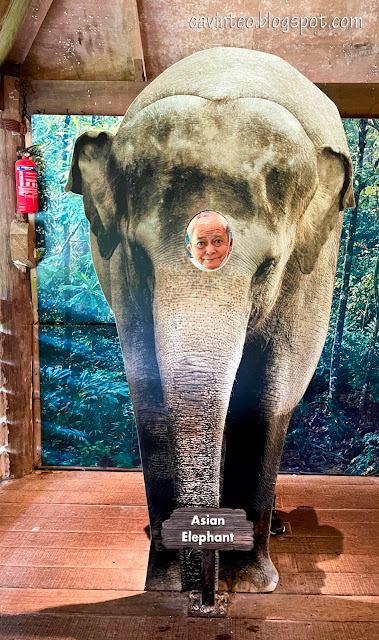























































No comments:
Post a Comment